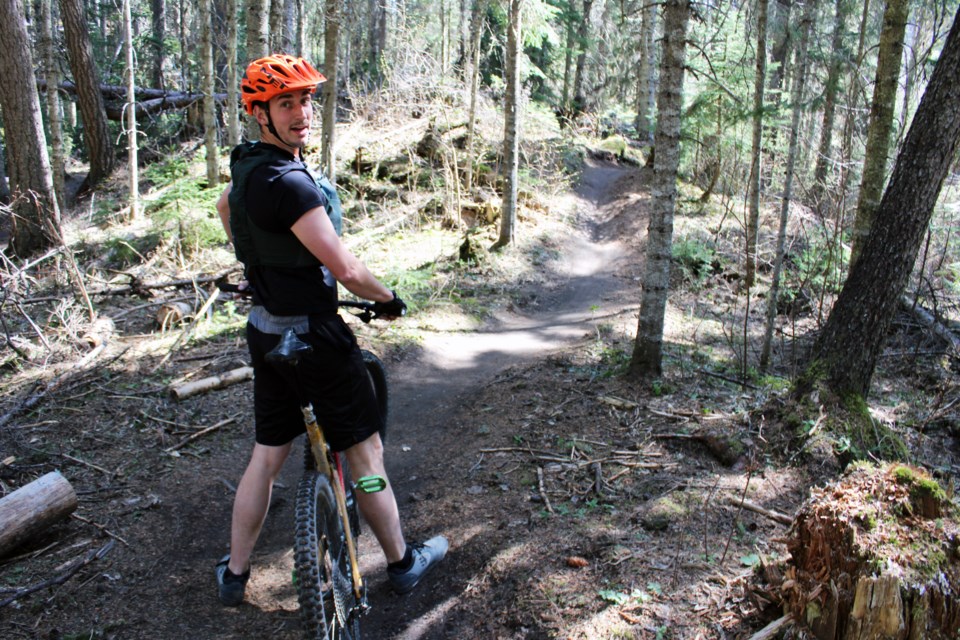Prince George is ripe for a wlidfire disaster of a similar scale to Fort McMurray in 2016 that destroyed 2,500 homes and buildings unless the forests that surround the city are managed appropriately, a local logging contractor says.
“We’re one serious fire away from losing potentially hundreds, if not thousands, of homes in Prince George,” Liam Parfitt said. “I think the city of Prince George is sitting on a time bomb."
Parfitt is co-owner of Freya Logging Inc., contracted over the winter for a Ministry of Forests wildfire risk reduction project to selectively log the Pidherny Recreation Site. The popular network of cycling and hiking trails about 12 kilometres northwest of downtown Prince George is within the Regional District of Fraser-Fort George but some of the trails encroach city jurisdiction.
“We know the problem is there and we’re not addressing it. So far, the city has done about 60 hectares of fire mitigation. Prince George is not doing enough to address the extremely high fire hazard inside of the city. You have all these neighbourhoods that have forests that go right into them. We’ve been lucky so far.”
The mitigation at Pidherny is designed to keep a sustained fire from advancing to Category 4 or 5, where it gets into the forest crown and candling occurs, at which point it becomes too dangerous for firefighters to try to control it. Parfitt said they opened the forest canopy to try to prevent crown fires and removed 90 per cent of the dense understory (mostly balsam) closer to the ground which can spread a fire from below to treetops.
“What we’ve done is each tree has its space and there’s enough distance between the crown so you can’t have a crown fire there,” said Parfitt. “It’s an exponential thing, if you take out 25 per cent of the trees you can actually reduce the fire hazard by 95 per cent. It’s the Rank 4 and 5 fires that blew up Fort McMurray because they throw those dinner-plate sized embers ahead of them.”
Some regular users of the Pidherny trails have complained about damage done to the trails where heavy excavating equipment crossed over to get to trees cut down to thin the forest. Some trails were driven on for their entire length to get to remote areas and will have to be rebuilt. Parfitt says the damage will be fixed in Phase 2 of the project later this summer.
Tom Hatch lives near Pidherny and he’s all for anything that will reduce the fire risk in the area where he rides his mountain bike a few times per week.
“There’s been a bit of destruction on the trails with debris along the side but they are cleaning it up, I think it’s just thinning it out to make a bit of a fire break and it’ll get green pretty quick,” said Hatch. “If you don’t clear it out a forest fire is going to do it eventually.”
Russell Phillips has been riding the Pidherny trails for 16 years and he likes what has been done to make to make the area more fire resistant.
“I don’t like to see the trees gone but I understand it’s part of the government mandate,” said Phillips. “I think they’ve done a great job cleaning it up and the trails have improved a lot. Overall I think it’s a positive change.”
One of the side benefits of the fire mitigation work at Pidherny is it is already showing signs of increasing species biodiversity. Moose and deer are coming back to the area and birds are taking advantage of the additional space in the forest to create nesting habitat.
With more light getting through to the ground, deciduous vegetation will increase and that will attract more animals that eat willows, shrubs and berries. With fewer large trees, more snow will collect on the ground, further reducing the fire hazard and that moisture will leave trees less stressed and less prone to beetle attacks.
“If you’ve ever tried to burn an aspen leaf in July, it doesn’t burn, so we’re using nature’s solutions switching from coniferous to a deciduous understory,” said Parfitt. “In that particular area of the subboreal forest there’s probably about 40 species in the understory and to get them supercharged we really only removed balsam and spruce.”


